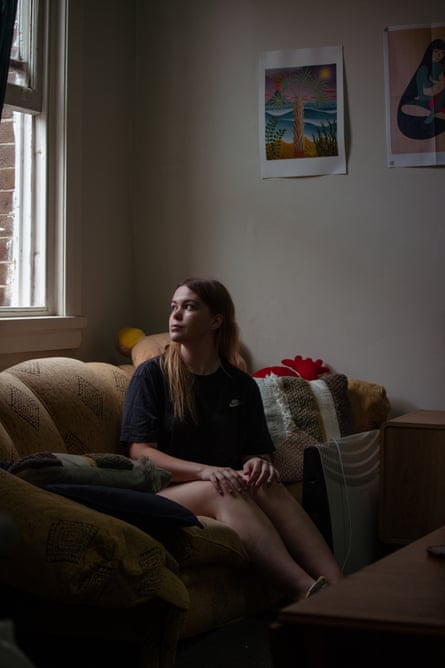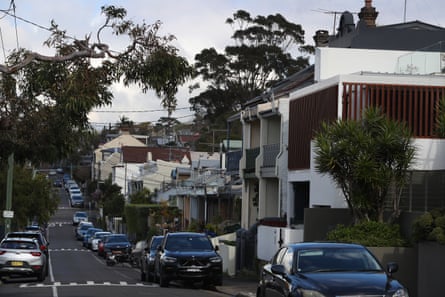When Amelia Grace Wilson-Williams started her university degree, she didn’t imagine it would be spent bunkering down in the family home.
But when the undergrad law student at the University of Technology in Sydney began hunting for rental properties in which to live alone or share with fellow students, she realised it was impossible while studying full time and only relying on her student Centrelink payments.
Instead, she’s doing her degree while living at her family home in Penrith, about 50km – or a 90-minute commute – away.
“The cost of apartments if I were to move is way too high,” she says.
“Even in the Penrith area you expect to pay around $400 per week, and it [the cost] just increases the closer you move to the city.”
For decades, the student share house has been a rite of passage. Some things have remained the same – mouldy couches, empty beer bottles and mismatched cutlery.
But a rental crisis, coupled with stagnating welfare payments, is leading more young people to opt out of moving out altogether. And others face sharp rent increases to remain in inner-city suburbs close to many older campuses – traditionally meccas for university students.
According to the Australian Institute of Housing and Welfare, the proportion of young people aged between 20 and 24 living with their parents increased from 48% in 2008 to 58% in 2018.

Data from the Reserve Bank of Australia found there has been a significant drop in group households in 2020, with some young adults opting to move back in with their parents, and others opting to live with their partner.
Since then, rents have had the largest upswing on record, jumping by 22.2% nationally since September 2020, according to CoreLogic.
During the two-year period, median weekly rents rose from $430 a week to $519.
Students on Youth Allowance payments living with their parents receive $166 a week, while those living independently receive $281 a week.
The academic director at RMIT’s College of Business and Law, Jonathan Boymal, says there had been a “generational shift” in how younger people approached share housing, exacerbated by the pandemic.
Boymal’s 17-year-old son told him it was a “no-brainer” he’d stay at home after high school, citing the ability to save and his digital connections that meant physical closeness wasn’t always necessary.
“They do miss out,” Boymal says. “You’re taking on responsibilities like cooking, cleaning, budgeting, but you’re also missing those different perspectives when you’re not living with other people that make you more open-minded.
“It does impact that sense of belonging, and connection to something outside the home when you’re not exposed to different forms of social equality – race, class, gender, sexuality.”
Boymal questioned where formative skills for young people – a sense of self-awareness and identity – would be fostered if they spent their youth at home.
“That’s why the rites of passage experiences are so important.”
Mae Anagnostis’s hardest adjustment when moving to Sydney from Newcastle to pursue her studies last year was finding accommodation.
Eventually, she and her partner secured a two-bedroom apartment in Glebe – pricier than she’d hoped, but a 10-minute walk from her university.
Then late last year, her landlord hit the couple with a $90 increase – pushing their rent to $650 a week.
“I was thinking if I couldn’t find something else we’d have to move home and commute,” she says. “When I was looking online I couldn’t find anything for that price close to university.
“I was finally feeling at home and was really dreading having to up and move again.”
Mae told her agent she couldn’t afford rent because she was a student – and bargained down to $625.
“It’s way more expensive than I was expecting and I almost feel embarrassed when I tell people how much my rent is,” she says. “Youth Allowance definitely doesn’t cover the increase.”

Combined rents have risen by 33.4% in Glebe, next to the University of Sydney, in the past 12 months and 6.8% in the past month alone, to an average of $843.57 a week.
In the popular student suburb of Kensington, near the University of New South Wales, combined rents have risen by 38.9% in the past year to now sit at $854.97 a week.
In Melbourne, the inner-city university suburb of Carlton, once popular with University of Melbourne students, has experienced a 21.1% rent increase in the past 12 months to $534.23 a week, or $594.32 for houses.
The National Tertiary Education Union’s president, Dr Alison Barnes, says the housing crisis is putting students under “enormous pressure” and could have serious ramifications on mental health.
“While some do opt to stay at home with their parents, that option isn’t available for everyone,” she says.
“With soaring rents and Youth Allowance at just $40 a day for people living out of home, it’s incredibly difficult for disadvantaged students to make ends meet.
“Anxiety and depression can become major issues for students who are scrambling to find a roof over their heads.”
The president of the National Union of Students, Bailey Riley, says there has been a surge in students reaching out while struggling to find accommodation due to price increases in rentals across the country.
“It doesn’t help that universities … have been selling off large portions of their privately owned accommodation, leaving third-party providers to fill the gap,” she says.
“These issues have been compounded by stagnant student welfare payments, which currently forces many students to live in terrible conditions.”
Antipoverty Centre spokesperson Kristin O’Connell says the “appalling rate” of student payments forced many adults to be financially dependent on their families while completing their education.
“Students who rely on Centrelink payments to survive are on some of the lowest incomes in the country,” she says.
O’Connell is calling for all welfare payments to be lifted to at least the Henderson poverty line of $88 per day.
“This isn’t even enough to cover the cost of a room in some share houses, and the housing crisis has seen rents at the lowest end of the market rising much faster than the average.”
Stay connected with us on social media platform for instant update click here to join our Twitter, & Facebook
We are now on Telegram. Click here to join our channel (@TechiUpdate) and stay updated with the latest Technology headlines.
For all the latest Education News Click Here
